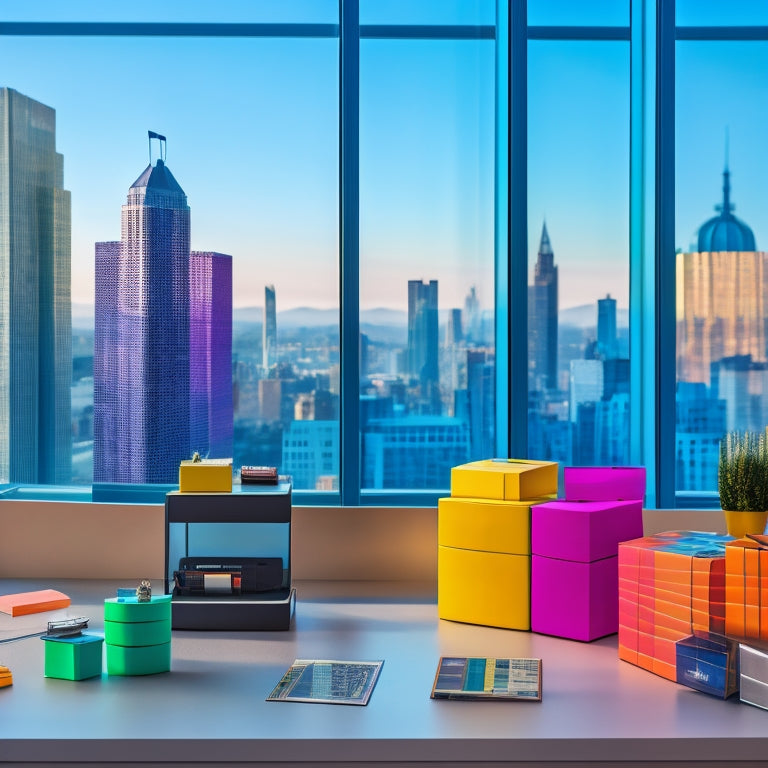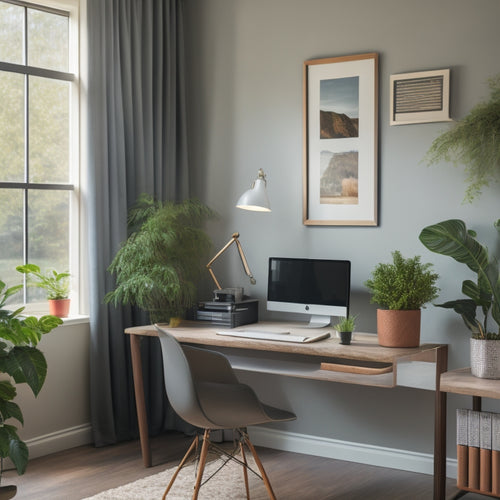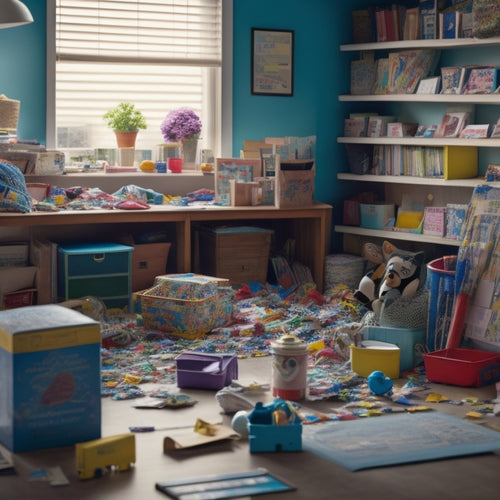
Revolutionize Your Organization: Stackable 3D-Printed Box
Share
Stackable 3D-printed boxes offer a transformative solution for maximizing storage capacity, enabling users to maximize their available space while streamlining their organizational systems. This innovative design enables efficient storage, customization options, and adaptability. To achieve peak results, it is essential to adjust print speed and temperature, optimize support structures, and consider post-processing techniques. By exploring diverse needs and preferences, evaluating customization options, and evaluating durability, users can create a tailored storage solution that meets their specific requirements. As you explore the potential of stackable 3D-printed boxes, discover how to unleash their full organizational potential.
Key Takeaways
• Maximize storage capacity and achieve space-saving efficiency with stackable 3D-printed boxes that offer customizable options for adaptable storage solutions.
• Optimize printing and assembly with tips on speed, temperature, infill density, and support structures to ensure durable and functional boxes.
• Explore similar storage solutions that cater to diverse needs and preferences, evaluating customization options, durability, and color choices.
• Unlock organizational potential by maximizing storage capacity, streamlining systems, and customizing solutions to suit specific requirements.
• Revolutionize storage with innovative design, tailoring box dimensions and features to integrate seamlessly into existing systems and minimize footprint.
Benefits of Stackable Design
Moreover, the stackable design of this 3D-printed box enables users to maximize storage capacity while minimizing footprint, making it an ideal solution for individuals who require efficient storage and organization systems.
This innovative design achieves space saving efficiency by allowing multiple boxes to be stacked on top of each other, freeing up valuable floor or shelf space.
Additionally, the customizable options available with 3D printing enable users to tailor the box's dimensions and features to suit their specific needs.
Whether it's storing small parts, tools, or accessories, this stackable box provides a versatile and adaptable storage solution that can be easily integrated into any existing organization system.
Printing and Assembly Tips
When preparing to print the stackable 3D-printed box, it is essential to carefully consider the printer settings and material choice to guarantee a successful and accurate build. To secure excellent results, follow these printing tips:
| Printing Tips | Troubleshooting Tips | Additional Resources |
|---|---|---|
| Adjust print speed and temperature | Identify and fix layer shifting | Consult printer manual |
| Use correct infill density | Check for warping or curling | Online forums and communities |
| Optimize support structures | Inspect for print defects | Manufacturer's guidelines |
| Conduct test prints | Consult online tutorials | 3D printing experts |
| Consider post-processing techniques | Join online support groups | Online courses and tutorials |
Exploring Similar Storage Solutions
In addition to the stackable 3D-printed box, numerous alternative storage solutions exist that cater to diverse needs and preferences. When exploring these options, consider factors such as customization options, durability, color choices, and material selection to guarantee the solution meets your specific requirements.
Some notable alternatives include:
- The Formula 1 Shaped Cell Phone Stand, offering a unique design and functionality
- The STACKABLE CAR ORGANIZER CAR STORAGE TOWER, providing ample storage for car enthusiasts
- The Scale Car Storage Tower, ideal for storing and displaying scale cars
- The Off-Road Display Base for scale cars, offering a rugged and realistic storage solution
Frequently Asked Questions
What Is the Ideal Infill Density for Printing the Storage Box?
For ideal printing, aim for an infill density of 20-30% to balance structural integrity and print speed, ensuring a robust yet efficient print process that yields a sturdy storage box without sacrificing build time.
Can I Use Different Materials for the Box and Lid?
"When selecting materials for the box and lid, consider contrasting or complementary options to achieve aesthetic variations, ensuring compatibility and structural integrity while exploring diverse material options for a unique, personalized design."
How Do I Prevent Warping During the Printing Process?
To prevent warping, remember the delicate balance of a chef's soufflé, where a slight temperature fluctuation can collapse the entire dish. Similarly, guarantee bed adhesion and precise temperature control to maintain a stable printing environment, minimizing warping risks.
Are There Any Recommended Post-Printing Treatments for the Box?
For peak durability, consider post-printing treatments such as applying a chemical coating to enhance scratch resistance or a UV protection clear coat to prevent degradation from ultraviolet light exposure, ensuring your 3D-printed box remains robust and long-lasting.
Can I Customize the Design to Fit Specific Storage Needs?
"Unlock design freedom and tailor the box to your unique storage needs with dimension variations, effortlessly adapting the design to accommodate diverse items, and granting you the precision to craft the perfect storage solution."
Related Posts
-

Master Your Space With Digital Decluttering Tools
You're tired of feeling overwhelmed by digital clutter, wasting time searching for lost files, and struggling to focu...
-

What's the Best Home Organization System for ADHD?
You need a home organization system that acknowledges your unique brain chemistry and works with your ADHD, not again...

